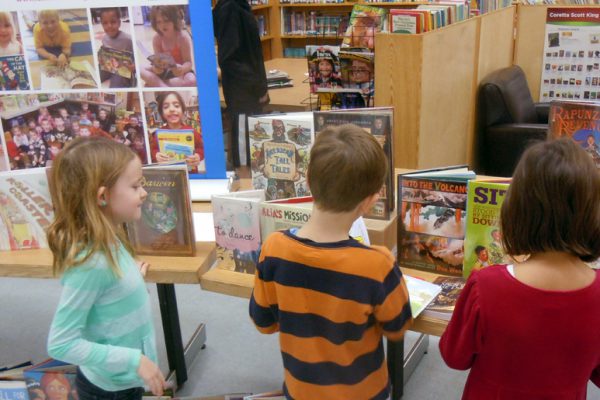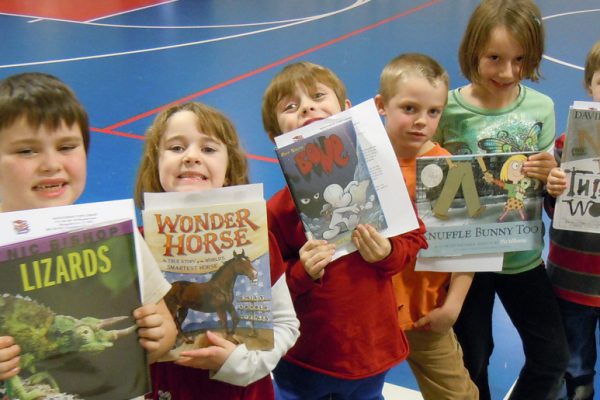
In March, I traveled to Nicaragua with one of Planting Hope‘s multigenerational trips. Over the past eighteen years, this small NGO has been using volunteers to help bolster the schools and libraries in and around San Ramon. Our group of about 20 people, ranging in age from 9 to 79-ish, visited a different school or library each morning and afternoon and conducted lessons in STEM, art, literacy, and sports, based on volunteer expertise and school need.
Luckily for me, I was teamed up with a district curriculum coordinator and a semi-retired art teacher. We were tasked with coming up with a lesson we could repeat daily with a wide age range of kids and required little to no materials and/or expense (right up CLiF’s alley – see our resource page with lists of little to no cost literacy ideas). We decided on book making.
The basis for our project came from this video that shows how to make an 8-page book with one piece of copier paper and a pair of scissors. Granted, we adults needed to practice the folding many times, and we needed to supervise the cutting, but this is a relatively simple way to get kids (and/or adults) to make their own books.
Our next decision was the book topic. Initially, we thought kids would select a topic on which they could come up with multiple examples, such as colors or pets or numbers. I personally became less helpful here since I do not speak Spanish, so we switched to having everyone making a book entitled Todo Sempre Mi, or All About Me. We the teachers each made their own book to share as an example; I did master reading my book in Spanish!
This seemed like such a simple project, but it was amazing how engrossed the kids were in the writing and illustrating of their own books. Teachers were also amazed by how focused the kids were and how useful this simple format was for practicing basic skills.
The impact of making your own book was reinforced at nErDcampVT. I went to a bookmaking session with cartoonist and Center for Cartoon Studies faculty member Jon Chad. He started the session by showing us all the handmade books in his collection (below). Then he walked us through making three different kinds of mini books, the basic being the one we taught in Nicaragua. For each, we discussed the pros and cons of the book making, thinking about the materials, process, size, readability, and replicability, and how it impacted creating the content.
Final lesson for me – engaging the writer/cartoonist/illustrator in deciding the book format leads to another level of excitement. It can stretch confident kids and adults, and it can invite more reluctant participants to take a chance since six pages of material is relatively manageable (once you design the front and rear pages).
There are so many ways to excite kids (and adults) by putting their thoughts into book form – whether an anthology such as that published by the Salisbury Community School with their Year of the Book funding or a comic book that tells an entire story in a few simple panels.
Let us know how your summer program incorporates bookmaking and literacy activities into your programming by entering CLiF’s summer reading challenge – CLiF always loves to hear your ideas !
!



